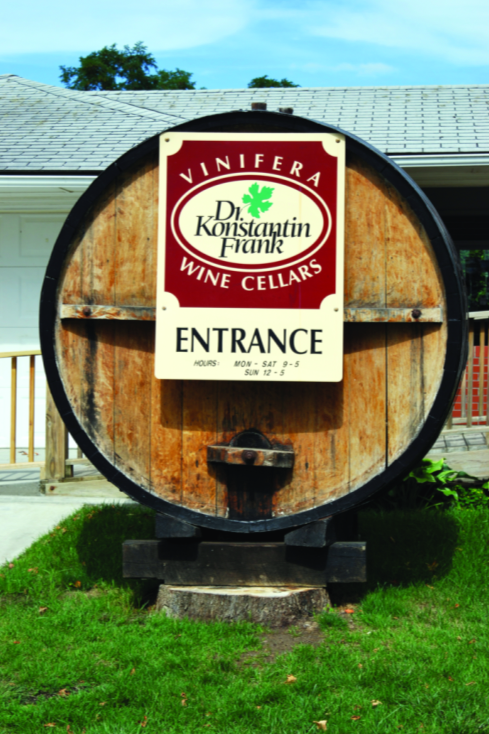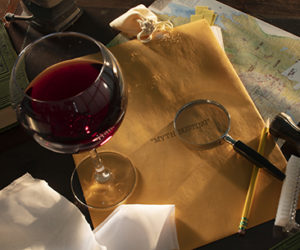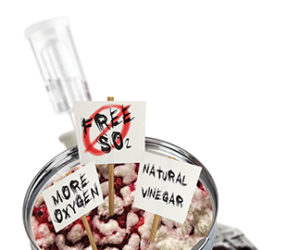
Heading to wine country is a field trip for adults. You’ve got beautiful scenery, interesting people, new beverages to enjoy and an opportunity to get away from the hustle and bustle of your everyday life. But how do you make the most of your winery field trip? As a winemaker, you have insight into the process of making wine, but how does that translate to the people who you might talk to during a winery visit? In this article I will share tips on preparing and planning for your visit, the experience at the winery and ideas for how to engage winery staff members; all designed to help you make the most of your winery field trip.
Planning Your Trip
When planning to visit a winery, it pays to do your homework. Who is behind the wine and what is the story behind the winery? Where are the wineries located in relation to where you live or are staying? How much driving between stops should you plan for? What are the tasting hours and fees? What wines are available? Are tours offered, and if so, are there specified days and times when they are available? Does the winery offer premium or select tastings that may require both reservations and a higher fee? Wow, that’s quite a few questions!
During your research and planning, it pays to take notes. It is also advisable to bring those notes with you rather than try to remember all the details. Taking that notebook along for your visit also ensures you will have a written record of your questions and answers, impressions and ideas when you get home.
The first place you should begin answering these questions is at the winery’s website. One thing to keep in mind is that the accessibility of all of the information you might be looking for varies amongst different winery sites. It is fair, however, to assume that directions, hours of operation, tasting fees and a list of the wines currently available will be found at most sites.
When researching a recent trip to Heron Hill Winery in Hammondsport, New York, I found their locations web page (www.heronhill.com/The-Winery/Locations) to be a particularly good example of having all the information in one place that is necessary to plan a visit. There are three Heron Hill locations, the actual winery and two tasting rooms, and the address, contact information and hours of each is listed at the top of the page. Tasting fees, the limit on the size of groups that require special reservations, a link to the events calendar, and information about the café at the winery is all clearly presented on the page. Using this information, I was able to quickly add this stop to my itinerary on a day and time that worked for me.
Learn the history. Every winery has a story. This story, and the images that story might plant in your imagination before you visit, is something winery owners hope to engage you with. Who are the people? What is the history of the vineyard site? Why do they make wine and why do they make it the way they do? All of this information should also be at the winery web site. The “About Us” page (www.clospepe.com/about_us.php) for Clos Pepe Vineyards in Santa Barbara County, California is the launching point for meeting the people and learning both the history and philosophy that goes into the Close Pepe wines.
You can go beyond the winery web site as well. Has the winery been reviewed in the major wine publications? If so, seek out the most recent reviews. The additional details will no doubt be interesting and might help you further plan your trip. Seek out wine blogs and other digital outlets that share wine and winery reviews. These sources will help you find out what other people (and some just like you) have experienced at the winery. Being knowledgeable about the history and people involved will go a long way when engaging them when you do visit. The respect you show by spending this time will most certainly enhance the engagement.
Here’s the first quick tip. Don’t plan too many visits in a short time. Rushing through tastings may be perceived as an exercise in consumption and you can’t really expect producers to think much of visitors who do that.
Tasting Etiquette
Titling a section “Tasting Etiquette” might raise concerns of pretension. In reality what I have to share is mostly about being comfortable in the tasting room setting. As you consume alcohol, your senses are dulled and you are actually tasting less and less as you go. Spitting is acceptable and more people should consider it. If you really want to taste the wines that you are presented with you will want to consider how much you drink. Most wineries will have a dump bucket or spit bucket at the tasting bar but using it to directly spit into can be a bit of a challenge. Many wineries will provide a plastic cup upon request. You can use this as your personal spit cup and carefully dump it in the community bucket as you go.
Here’s a tip based on my personal tasting process. I typically swallow the first sip of every wine I taste in all tasting settings. There is a secondary function of your sense of smell called retronasal smell, this function occurs when you swallow food and drink and the aromatics enter the rear of your nasal passage. The additional aromatic elements you pick up this way will provide you with a much more complete tasting experience. Follow this sip by tasting some amount of the remainder of what is in your glass, spitting or dumping the rest. You can also inhale through your mouth when you have some wine in it. This will pull wine aromas past your retronasal passage.
On a recent visit to LaBelle Winery in Amherst, New Hampshire, Paulette Eschrich, tasting room host and the wholesale account manager, made this same point when I asked her what guests should think about when visiting a winery. Paulette was quick to respond with “There is a difference between tasting and drinking.” Yes, there is indeed. If you are at the tasting bar and can’t remember what you were poured mere seconds later, you might be in the wrong place. That place is called a bar. Pay attention to the wines and their story.
Getting the Story Behind the Wines
I asked my wife to give me a third party perspective on some of the conversations I have had with winemakers and winery owners. Her response pretty much sums up my key recommendation for how to engage producers and winery owners. She said “When it comes to questions about the wines and wineries you have gotten your best responses, and been most successful, when asking the winemaking team about why they do what they do and what they think distinguishes them.”
For amateur and professional winemakers, the process that goes into making the wines is certainly less mysterious than it is for someone who has never made wine. When I asked Pat Henderson of Kenwood Vineyards in Sonoma County, California if giving tours for amateur winemakers is different than the non-winemaking public he replied, “Yes, as a professional winemaker I always enjoy giving tours to home winemakers because they are interested in, and understand what I am talking about. I can talk to them about pumpovers and racking without first having to explain what it is.”
What might we want to ask a winemaker when we visit? That depends. Some of us are technical winemakers and some of us might be more interested in a winemaker’s philosophy. When I asked Amy LaBelle, owner of LaBelle Winery in New Hampshire, about inquiring as to a winemakers’ motivations, she said “Definitely ask about the why, you can learn the how.” This line of questioning is particularly useful for people who are considering going commercial at some point. The non-technical side of running a winery requires as much time and consideration as the winemaking, and the path a winemaker or winery owner took to get there offers many lessons.
I typically start interviews by asking producers about their motivations, how they came to be where they are and how they think their specific practices sets them apart from others. I believe starting here is the most reliable way to figure out which follow-up questions make the most sense based on who you are talking to. This is a good point to remind you to have that notebook and pen handy. The answers to your questions will be a whole lot more tangible to you later if you write them down.
Another great way to capture the experience is by taking a lot of pictures. Whether you use your smartphone or stand-alone camera, photos are a great way to remember and share your experiences. Before snapping pictures though, you should ask permission to photograph. I’ve never been to a winery that didn’t allow pictures, but asking permission lets them know your intentions ahead of time.
One example of a great exchange with a winemaker came during a visit to Red Tail Ridge in the Finger Lakes region of New York. When I asked Nancy Irelan of Red Tail Ridge how she came to be in the business she talked about her background in chemistry, crop growth optimization and experimental grape varieties. Originally from California, her passion for plants led her to grapes and ultimately to wine. Her current focus is on planting the right grapes for their location in New York. Her attention to detail both out in the vineyard and in the winery is noticeable and impressive, making her background tangible and real. I concluded that every decision at Red Tail Ridge is made with the goal of maximizing the fit of the winery and its wines to the location and region. What I learned from the opening part of the conversation was that she and her team are looking to establish a “sense of place” and the level of focus required to do so was then represented in my further questions.
Are you new to winemaking and not sure exactly what to ask? Pat Henderson offered the following suggestion on how to prompt a winemaker to share their experience making wine. “A good question is something like ‘What aspect of winemaking is most important to making good wine?’ An honest winemaker will say ‘grapes,’ but if you press them beyond that they might say barrels or fermentation, and then elaborate on why they think it is so important. This allows you to get a unique perspective on how they make wine.”
You might also ask the winemaker if they made wines at home prior to working in a commercial setting. If they did, asking what differences and changes they had to adapt to will illustrate what someone with commercial aspirations should be prepared for.
If you have technical winemaking questions, try and be as specific as possible. The scale of commercial winemaking can be quite a bit different than the scale of the average amateur winemaker. Being specific about your path to a certain problem or question or plans you might have ensures that the winemaker you are asking questions of has the best chance of providing a useful answer. I asked Wes Hagen, vineyard manager and winemaker for Clos Pepe in Lompoc, California, for tips on engaging winemakers and he echoed this sentiment. Asking “How did you make your best small-lot?” or “How do I do sulfite additions to a 5 gallon carboy?” are specific questions that a commercial winemaker can readily entertain.
Are you wrestling with barrels in your cellar and interested in improving your use of oak? Ask the winemaking staff about their barrel program. What types and sources do they use? What is their breakpoint of new versus used oak in any vintage? How long do they age their wines? How do they care for their barrels between bottling and when the next wines are ready? How do they decide if barrels need to be retired? Another question that may or may not apply is whether a winery uses other oak sources like locally sourced staves or other woods.
To the Laboratory!
If the technical aspects of winemaking interest you, inquire about the winery’s lab. Some wineries have set testing programs as their wines age, while others will only analyze a wine (or send it out for analysis) if there is a problem. Ask the winemaker what they routinely test for and what are the numbers he or she pays the most attention to.
Vineyard Visit
Are you a grower or aspiring to setup your own home vineyard? Asking winemakers and vineyard staff about their viticultural practices will be of particular interest to you then. Ask if a tour of the vineyard is possible. If the winery is situated near your own location, inquiring about the grape varieties that are most productive and successful may give you hints for your own choices. Are their specific disease or pest issues that you want to better manage? Ask away!
Most vineyards track their degree days (a measure of heat available for vine growth) and if you intend to grow grapes nearby you will benefit from knowing what they record in their vineyard as a basis for comparison.
In addition, be sure to see what type of trellis they are using, and ask why. Choosing the right trellis system is a major consideration when installing a vineyard. If all the commercial vineyards in your vicinity use the same type, that should be telling you something.
Are you new to pruning and canopy management? Find out if the vineyard makes use of volunteer help and would be interested in helping you learn these techniques up close and personal. Wes Hagen reinforced this point with the suggestion to seek out an opportunity to volunteer at harvest time. There is no better way to understand how wines you enjoy come to be than to be involved in making them firsthand!
I always ask winemakers what they think sets them apart from their peers. On a recent visit to Heart & Hands Wine Company in New York’s Finger Lakes region, Tom Higgins, owner and winemaker, talked extensively about the work they are doing in the winery to get to know the Pinot Noir grapes grown in upstate New York. Asked for an example, Higgins got to talking about trials in the different degrees of whole cluster pressing they applied in the 2011 harvest. This could devolve into a technical conversation, and Higgins explained some of the motivations in technical terms, but he suggested that the differences and their potential to uniquely represent his product would be best observed by tasting the batches that were still in the barrel. I’ve sampled from the barrel before, but never with such a specific procedural aspect of the wine as the focal point. The range of spice and tannins present in the different samples was illustrative of the impact that whole cluster pressing has on finished wine. While Heart & Hands is not the only winery using whole cluster pressing on Pinot, the experimentation that may ultimately lead to a unique Heart & Hands style definitely stood out for me.
Bringing It All Together
I try not to consider wine tasting like work. Even my commando trips where I have lots of visits scheduled over a few days need to be lively and fun or I won’t enjoy myself. If the visits aren’t fun, I won’t return home with positive memories of the people, places and wines. And as a reminder, be prepared with all the field trip necessities — snacks, water, directions, contact information, etc.
A suggestion from Wes Hagen initially struck me as odd, because it is something that I’ve never specifically done during a winery visit — share your own wines with the winemaking team. I’ve shared my wines with plenty of other winemakers, just outside of a commercial winery setting. Hagen said “Good winemakers are always interested in tasting other folks’ wines.” The mutual respect that can be gained from sharing is not to be underestimated, and getting feedback on your own wines from a commercial producer can be equally invaluable.
And finally, wineries are businesses. Assuming a winery has engaged you successfully and also shared their delicious wines with you, buy some to take home. If you are travelling by air, consider having wine shipped home. Finding wines to add to your cellar or give as gifts is one of the most exciting outcomes from a wine country trip.
By planning your winery visit ahead of time you’ve educated yourself on where you are going, who is involved and what to expect. Developing a strategy for the questions that you ask that is both flexible and grounded in your research ensures you can start off on the “right” foot and adapt the conversation as the winemaker or other winery staff shares their story with you. You are ready to head to wine country!
Jason Phelps blogs at www.winemakermag.com. He makes award-winning wine, beer and mead at his home in New Hampshire.







